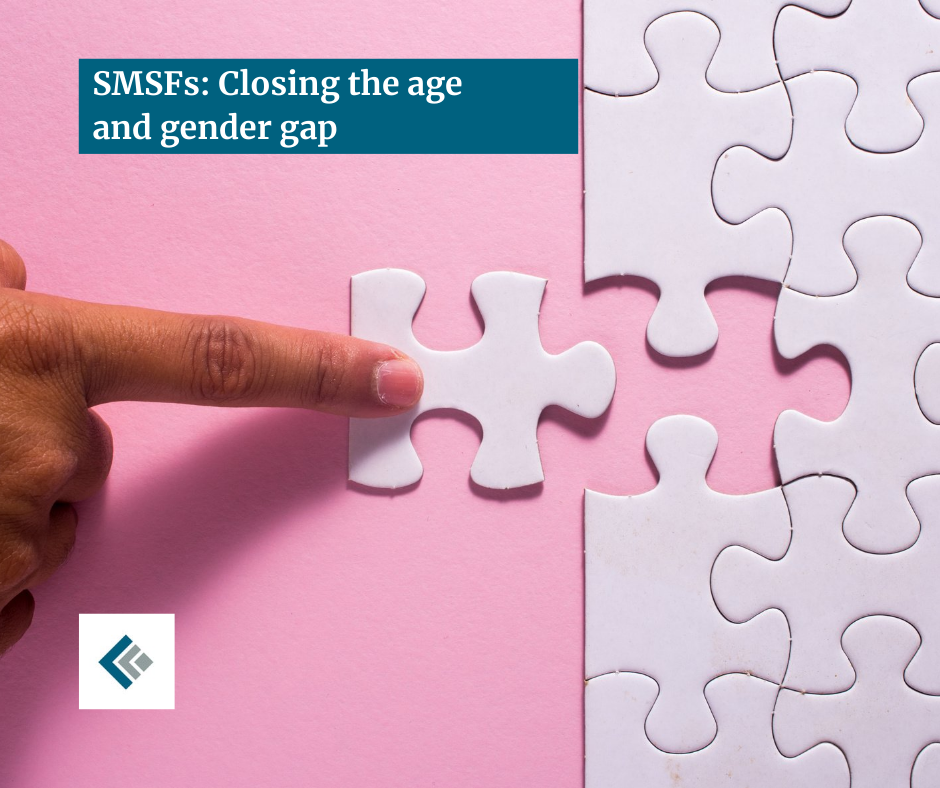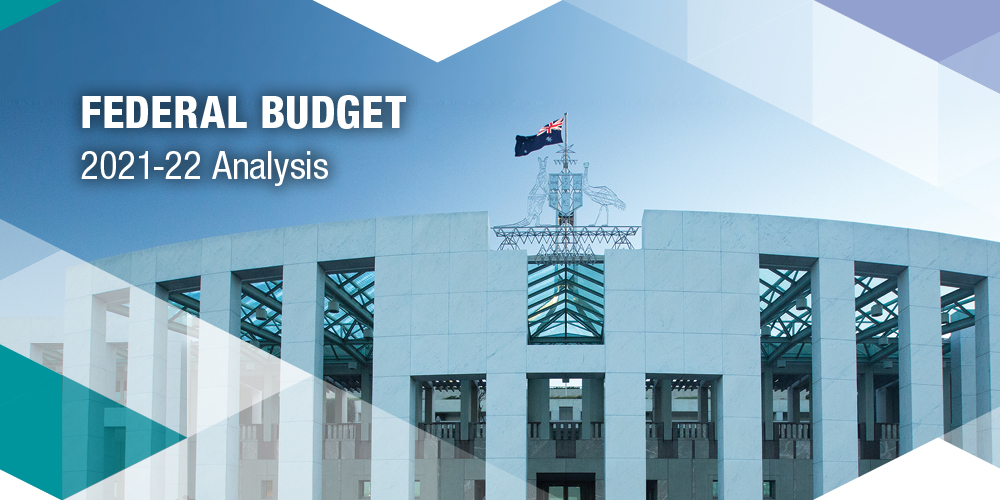
Buying insurance through superannuation has many advantages – but you need to make sure you are getting the right cover for your individual needs.

Buying insurance through superannuation has many advantages – but you need to make sure you are getting the right cover for your individual needs.

A recent ATO report showed Australians under the age of 45 now make up around 47% of all new SMSF trustees. So what’s driving younger people to SMSFs?

Most older Australians are not mapping out plans to pay for their aged care, a survey shows…

Responsible, ethical or sustainable investing – putting your money into companies or sectors that are aligned with your values – has been around for many years.

The principle of ‘salary sacrificing’ may not sound very appealing. After all, who in their right mind would voluntarily give up their hard-earned cash. But it can have real financial benefits for some in terms of reducing your taxable income, which could see you pay less at tax time.
As we nudge ever closer to the end of the financial year, it’s worth taking a look at salary sacrificing to see if it’s a worthwhile strategy to put into place for you.
A salary sacrifice arrangement is also commonly referred to as salary packaging or total remuneration packaging. In essence, a salary sacrifice arrangement is when you agree to receive less income before tax, in return for your employer providing you with benefits of similar value. You’re basically using your pre-tax salary to buy something you would normally purchase with your after-tax pay.
The main benefit of salary sacrificing is that it reduces your pre-tax income, and therefore the amount of tax you must pay. For example, if you’re on a $100,000 income, you may agree to only receive $75,000 as income in return for a $25,000 car as a benefit.
Doing this would reduce your taxable income to $75,000 which could lower your tax bill because you’re essentially earning less as far as the tax office is concerned.*
This arrangement must be set up in advance with your employer before you commence the work that you’ll be paid for and it’s advisable that the details of the agreement are outlined in writing.
According to the Australian Tax Office (ATO), there’s no restriction on the types of benefits you can sacrifice, as long as the benefits form part of your remuneration. What you can salary sacrifice may also depend on what your employer offers.
The types of benefits provided in a salary sacrifice arrangement include fringe benefits, exempt benefits and superannuation.
Fringe benefits can include:
Your employer pays fringe benefit tax (FBT) on these benefits.
Exempt benefits include work-related items such as:
Your employer typically does not have to pay fringe benefits tax on these.
You can also ask your employer to pay part of your pre-tax salary into your superannuation account. This is on top of the contributions your employer is already paying you under the Superannuation Guarantee, which should be no less than 9.5% of your gross (before tax) annual salary, though this may rise in the near future.
Salary sacrificed super contributions are classified as employer super contributions rather than employee contributions. These contributions are called concessional contributions and are taxed at 15 per cent. For most people, this will be lower than their marginal tax rate.
There is a limit as to how much extra you can contribute to your super per year at the 15 per cent tax rate. The combined total of your employer and any salary sacrificed concessional contributions cannot exceed $25,000 in a single financial year. If you exceed the cap, you could be charged additional tax on any excess salary sacrifice contributions.
Most employers allow employees to salary sacrifice in super, but not all employers will allow salary sacrificing for other benefits.
Salary sacrifice is generally most effective for middle to high-income earners, while there is little to no tax saving for people who are already in a low tax bracket.
If you are a middle to high-income earner, then it may be worth considering salary sacrifice to reduce your taxable income and to take advantage of some of those benefits.
Before you do, make sure you talk to us so we can help ensure it is an appropriate strategy for your circumstances.
*Note: This example illustrates how salary sacrifice arrangements can work and does not constitute advice. You should not act solely on the information in this example.
Source for all information in this article: https://www.ato.gov.au/General/Fringe-benefits-tax-(FBT)/Salary-sacrifice-arrangements/

Halving of pension minimums for FY2022
On the 29th of May, the federal government announced an extension of the temporary reduction in superannuation minimum drawdown rates for a further year to 30 June 2022.
|
Age |
Reduced percentage factor for 2019/20, 2020/21 and 2021/22 | Normal percentage factor |
|
Under 65 |
2% |
4% |
|
65–74 |
2.50% | 5% |
|
75–79 |
3% |
6% |
|
80–84 |
3.50% |
7% |
|
85–89 |
4.50% |
9% |
| 90–94 | 5.50% |
11% |
| 95 or more | 7% |
14% |
The government says their aim is to make life easier for retirees by giving them more flexibility and choice in their retirement. This extension builds on the additional flexibility announced in the 2021-22 Budget.
There is no action that needs to be taken until the new financial year.
For existing clients, we will be reaching out to those of you affected by this change. In the meantime, if you wish to discuss please do not hesitate to contact us.

Investing in recovery In his third and possibly last Budget before the next federal election,…

Separation and divorce can be a challenging time, often made all the more difficult when you have to divide your assets. So how do you go about decoupling your superannuation?
In years gone by, superannuation was not treated as matrimonial property, so divorce settlements typically saw the woman keeping the house as she generally had the children and the man keeping his super. In a sense, neither party won. She ended up with a house but no money for her retirement while he had nowhere to live but money for his later years.
To remedy this situation, since 2002 super can be included when valuing a couple’s combined assets for a divorce settlement. After all, these days super is probably your second largest asset after your family home.
While super is counted in the calculation of the total property, that does not mean it is mandatory to split the super – the choice is yours.
Unlike the early 2000s, both partners are likely to have superannuation these days although traditionally women will still tend to have lower balances.i On average, women retire with just over half the super balance of men and 23 per cent of women retire with no super at all.
As a result, many divorcing couples may end up splitting super along with their other property.
If you decide to split your super, then you have three avenues, but keep in mind that all require legal advice.
The three ways to split your super are:
A court order is the last resort if you can’t agree on a property settlement.
You can split your super as you choose both in terms of the amount and the timing. You can split it as a percentage or as an agreed figure and you can choose to split it immediately or at some time in the future. Much will depend on each of your life stages.
But whatever you decide, you MUST comply with the superannuation laws. Money received from your partner’s super must be kept in super unless you satisfy a condition of release. You also need to be mindful of taxable and non-taxable components and divide them equally.
Say the superannuation balances of a couple is $500,000 with John having $400,000 and Susie $100,000. If the property settlement on divorce was decided as a straight 50:50 split and it included the super, then John would need to give $150,000 of his super to Susie.
Susie would nominate a fund and the money would be transferred.
If you have a binding financial agreement or a court order, this transfer of assets from one fund to another will not trigger a CGT event. But if you don’t have such an agreement, then John would trigger a CGT event on the $150,000 he transferred. Susie, meanwhile, would have the advantage of resetting the cost base on her received $150,000. So, a win for Susie, but not for John.
If John happened to be in the pension phase but Susie was still too young, the money that is transferred from his super to Susie will be treated according to his situation. As a result, Susie would be able to access the money before she reached preservation age.
If you have a self-managed super fund, the situation could get a little more complicated as you have to deal with the issue of trusteeship.
If there are only two members/trustees in the fund and Susie chose to leave, then John would either have to find a new trustee within six months or change to a corporate trustee where he could be the sole director.
Assets within an SMSF can also prove an issue, particularly if a sizeable proportion of the fund was tied up in a single asset such as commercial premises. How easy would it be to sell the premises? What if the property was John’s business premises and the means by which John was in a position to pay Susie child support? These are questions that need addressing.
If you are in the process of divorce or considering it, please reach out to the Sherlock Wealth team here to help you plan your finances before and after the event.

The government is taking action to make Australia’s superannuation system more transparent but individuals still need to take
ownership of their super and think about how the changes impact them. Super is not the set and forget savings scheme many
think it is.
Here are some of the latest changes to be aware of.
It’s not 100% official but the Government is expected to lift the Superannuation Guarantee (SG), the proportion of money
employers are required to divert to employees’ super, from 9.5% to 10.0% on 1 July 2021. The SG has been frozen at 9.5% since
2014 – lifting the rate is aimed at channelling more savings into super, which is one of the three key pillars of retirement savings.
Happy with your existing super account? Instead of being diverted into a new employer’s default super fund, as of 1 July 2021,
workers will automatically retain their super account unless they notify their employer otherwise. This change gives people a
greater voice in their choice of super account and will reduce the number of super accounts people have, which will help minimise
fees and grow balances. It’s known as ‘stapling’ and means that your super account moves with you as you change jobs.
Employers will need to take these steps when hiring a new employee:
There is a greater requirement for transparency under the latest super reforms. Super fund administrators will need to
communicate why investment decisions have been made and how these were done with the best interests of members in mind.
Fund performance will be monitored through an annual performance test and the results will be publicly available. Funds that
fail two tests will be closed to new members. Testing will begin with MySuper products in July 2021 and rolled out to all super
products from July 2022. In this context, it pays to be on top of your fund’s performance
If you need help deciding what’s right for your super, reach out to the Sherlock Wealth team to discuss your unique situation here
This information is current as at February 2021. This article is intended to provide general information only and has been prepared without taking into account any
particular person’s objectives, financial situation or needs (‘circumstances’). Before acting on such information, you should consider its appropriateness, taking
into account your circumstances and obtain your own independent financial, legal or tax advice.

There are only certain people who can inherit your super when you die. There are also two different types of nominations you can make. Here’s what you need to know before making your super beneficiary nomination.
Super is different from other assets, such as your house, because the trustee of your super fund ultimately decides who gets your super and any associated life insurance, if it’s held within the super fund when you die.
Super doesn’t automatically go to your estate, so it’s not automatically included in your Will. That’s why you need to tell your super fund who you nominate. And, depending on the type of nomination, they’ll either consider your nomination or be bound to pay it as you’ve nominated.
Who can you nominate?
Super fund trustees can only pay your super to ‘eligible dependants’ or to the ‘legal personal representative’(LPR) of your estate.
Eligible dependents are restricted to these people:
Spouse
A spouse includes a legally married spouse or a de-facto spouse, both same-sex and opposite-sex.
A spouse can be a person you’re legally married to but are now estranged or separated from. So, if you haven’t formally ended a marriage, your husband or wife is still considered your dependant under super law. And, while you can’t be legally married to two people, it’s still possible to have two spouses – a legally married spouse and a de facto spouse.
Child
A child includes an adopted child or a stepchild. Even though a stepchild is included in the definition of a child, if you end the relationship with the natural parent or the natural parent dies, the child is no longer considered your stepchild. However, they may still be considered a financial dependant or in an interdependency relationship with you and could therefore continue to be a beneficiary of your super.
Financial dependant
Generally, a person who is fully or partially financially dependant on you can be nominated as your super beneficiary. This is as long as the level of support you provide them is ‘necessary and relied upon’, so that if they didn’t receive it, they would be severely disadvantaged rather than merely being unable to afford a higher standard of living.
Interdependency relationship
Two people have an interdependency relationship if they live together and have a close personal relationship. One, or each of them, must also provide a level of financial support to the other and at least one or each of them needs to provide domestic and personal care to the other.
Two people may still have an interdependency relationship if they do not live together but have a close personal relationship. For example, if they’re separated due to disability or illness or due to a temporary absence, such as overseas employment.
Who is not a dependant?
A person is not a dependant if they are your parents, siblings or other friends and relatives who don’t live with you and who are not financially dependent on you or in an interdependency relationship with you. If you do not have a dependant you should elect for your super to be paid to your legal personal representative and prepare a Will which outlines your wishes.
Legal personal representative
A legal personal representative (LPR) is the person responsible for ensuring that various tasks are carried out on your behalf when you die. You can nominate an LPR by naming the person as the executor of your Will. Your Will should outline the proportions and the people you wish your estate, including your super, to go to.
Types of nominations
There are two types of nominations you can make once you decide which super dependants, or LPR, you wish to nominate:
A non-binding death nomination is an expression of your wishes and the trustee will consider who you’ve nominated but they’ll ultimately make the final decision about who receives your super and any associated life insurance.
A binding nomination means the trustee is bound by your nomination. They must pay your super benefits to your nominated dependants in the proportions you set out or pay it to your estate if you nominated an LPR. Binding nominations need to be signed and witnessed by two witnesses who are not named as beneficiaries. Also, they expire after three years unless you re-affirm your nomination.
If you’re not sure of the best way to nominate your super beneficiaries, or to discuss your situation in further detail, please contact the Sherlock Wealth team here.
Source: IOOF